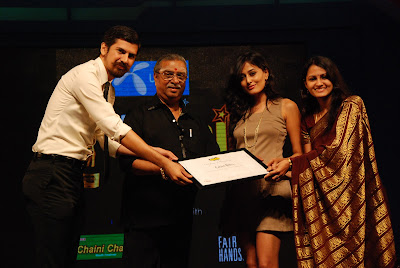A visit to any temple in India reveals a wealth of sculptures with intricately carved jewellery. It is evident from these sculptures that Indians have been fond of gold jewellery since thousands of years. The intricacies of the designs even on stone figurines show the craftsmanship of not only the sculptor but also that of the goldsmiths of that era from whose jewellery the sculptors may have derived inspiration. Not just sculptures, but ancient seals and paintings too reveal a wealth of ornate jewellery designs of those times. The craftsmen were proficient not just in creating gold jewellery but also in setting precious stones, ivory, pearls in gold.
Mysore has its own niche of artisans who have spent their lifetime creating gold ornaments. This Weekend Star Supplement takes a walk through the bylanes of Kurubarageri which has been home to hundreds of goldsmiths since ages.
A walk along goldsmith lane
A jewellery is worn as an adornment, a symbol of societal status and also as a talisman on any part of the body. And while admiring the beauty of the yellow metal and the designs etched on it, most of us never stop to give a thought to the hands behind the beautiful and delicate designs.Traditionally, people in the country have invested at least a portion of their savings in jewellery as both investment and for their womenfolk. Gold has been, and will remain, the main criteria for both beauty and wealth and Indian artisans are skilled in making exquisite jewellery pieces.
Sleepy cities like Mysore in which people mostly went to small gold artisans (or akkasaligas in Kannada) for getting jewellery made as per their choice, have now begun looking towards glittering jewellery showrooms and well-known brands.
A walk through the bylanes of Ashoka Road in city brings this reality to the fore. The once-busy roads are now forlorn, with most shops of goldsmiths closed down permanently and the new generation unwilling to take up the work, moving on to other jobs.
Many goldsmiths of the area whose families have been engaged in jewellery making since many years, say that nowadays they get orders for jewellery making mostly from jewellery shops. The habit of people visiting their workshops for ordering their custom-made jewellery has lessened and only those who have been coming since many years continue to do so.
Explaining the procedure they follow in making jewellery, Dhananjaya, whose family is in the business since 60 years, said the steps include filing, soldering, forging (beating and hammering into desired shape), casting and polishing the finished product.
They get flattened pieces of gold which they put into moulds or design with hand, painstakingly carving required designs into the malleable gold which has been hardened by adding copper. It is to their credit that the goldsmiths, after years of working, attain a skill much better than the precision machinery, and that too with just their hands and eyes.
Well into his ripe age, Janardhan, who has been making gold jewellery since he was about 14 years of age, said though the advent of machinery has affected their livelihood, it is insignificant as most machines are expensive and many jewellery shops, except the big companies, couldn't afford them. Such shops depend on the goldsmiths to fulfill their orders.
When asked if youngsters are learning the trade, he said that goldsmithing is a skill which is best learnt when young.
It takes about six to seven years to learn the basics of the delicate art and many more years to acquire expertise. Earlier, young boys would come to learn the trade and now, after the Child Labour (Prohibition) Act came into effect, the goldsmiths cannot employ young-sters at their shops. Hence nowadays, no youngsters are showing up to learn the art, he says adding that it is not an art which could be learnt by adults, who normally lack the patience much needed for the work.
Expressing doubts about the future of goldsmithing, Janardhan said the dwindling interest to learn the trade is a natural process, though it is regrettable that this is already resulting in the vanishing of the art.
When asked about the jewellery making courses offered by the colleges, he said though many youngsters are joining the course which is quite modern with the use of machines, it will never come on par with the traditional art learnt under goldsmiths. This is because the colleges teach only a part of the trade in the course.
The graduates who come out of the colleges cannot take up the business of making jewellery independently as they would lack the skill required for other processes. They would either have to join a big company or workshop or will have to collaborate with other artisans, he added.
Parthiv, another artisan who employs six men for show work or embedding precious stones into jewellery after it is cast and designed, says though gold jewellery can be made even with the help of machines, the next step, that is fastening stones into jewellery, has to be done by hand.
Allam, an artisan who gives a final and glittering touch to gold ornaments by polishing them, seems busy with his work giving gold glitter to a silver anklet (gejje) through electroplating. About 15 years of polishing ornaments has not managed to wipe off the smile from his face as he explains polishing procedure using nitric acid and cyanide.
The goldsmithing art may be vanishing, but there is still hope in the hearts of the artisans who toil night and day to make ends meet. Their efforts and fine skills are however, rendered unackn-owledged by the people as glitt-ering showrooms of more fam-ous jewellery brands mask the humble workshops of artisans.

































